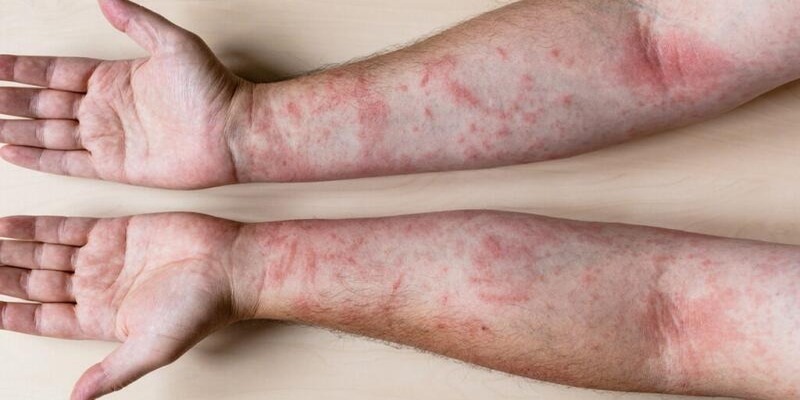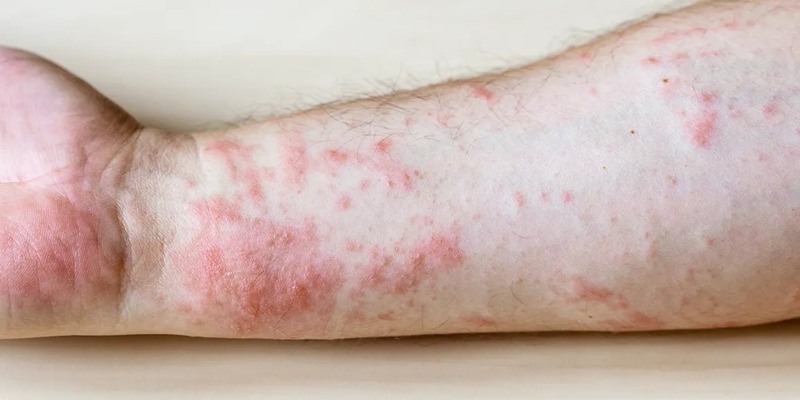
There are various reasons red spots grow on the skin. Therefore it's frequently impossible to pinpoint what the underlying cause may be. Skin irritation can originate from numerous reasons, such as an acute infection or a persistent illness. To find out exactly what's behind your red spots, make an appointment with your doctor and get them evaluated.
Pityriasis Rosea

Pityriasis rosea is an inflammatory skin disorder that generates a red rash. Its specific etiology is unknown, although researchers suspect it could arise from a viral infection. The rash is sometimes called a Christmas tree rash because it generally starts with a wider oval-shaped red area that looks a little like a Christmas tree.
This bigger patch emerges initially and can be located on the chest, back, or abdomen. It's called the mother patch, and the smaller patches that grow on other portions of the body are called the daughter patches.
Heat Rash

Heat rash arises when the pores in your skin get blocked while you sweat. It might happen during activity or while you're in hot or humid conditions. If the sweat stops getting to the surface of your skin, tiny lumps that appear like blisters can occur. They could be red or filled with clear liquid. The lumps might feel irritating or unpleasant.
Heat rash often starts in locations where your skin rubs together, like your armpits, or where clothes scrape against the skin. In babies, it can occur around the neck. Heat rash normally goes away after your skin cools off.
Contact Dermatitis
The skin might respond when it touches anything that's either an allergy or an irritant. Contact dermatitis is a rash that arises when you touch a chemical you're allergic to or that is harsh on the skin, such as a powerful cleaning agent.
Whether or not you acquire contact dermatitis depends on what you're allergic to or exposed to. For example, most individuals are sensitive to poison ivy and will get a rash after touching it.
Shingles
A shingle is a painful rash with blisters that develops on one side of the face or body. It's caused by the varicella-zoster virus (VZV), which causes chickenpox. If you've had chickenpox, the virus might become active years later and cause shingles.
Before the rash starts, you could experience itching or itching in the region. Since shingles are more frequent in older folks, the Centers for Disease Control and Prevention (CDC)Trusted Source advises that people aged 50 and over obtain a vaccination to avoid symptoms.
Swimmer's Itch
Swimmer's itch is a rash that occurs from being in water that's contaminated with a parasite. Snails are infected with the parasite and transmit it in ponds, lakes, and seas. When individuals swim in the water, the parasites might get on their skin.
For certain people, these parasites might induce a response. They induce burning, irritation, and little crimson pimples or blisters. Swimmer's itch often goes away in about a week and doesn't typically require medical intervention. In the interim, anti-itch treatments can help lessen symptoms.
Drug Rash
You may develop a rash when your body has an adverse reaction to a pharmaceutical. This is not limited to medications with a topical application but includes all forms of medicine. Drug-induced skin reactions might vary in severity. You may require immediate medical treatment if your condition worsens.
The appearance of the rash might vary from person to person and from drug to medicine. Some drugs, for instance, have been linked to the appearance of tiny red bumps, while others have been linked to the development of scaling, peeling, or purple areas on the skin.
Itchy skin is another possible side effect. It's important to consult a doctor if you start developing a rash a few days or weeks after starting a new medicine. They can determine the root of the response and treat you with antihistamines or steroids.
The Bottom Line
There are several different causes for red patches on the skin. Some are induced by allergens, like contact dermatitis, while others are caused by bacteria, viruses, or autoimmune disorders. If your symptoms are causing extreme discomfort or don't improve after taking an over-the-counter anti-itch cream or pain medication, visit your doctor.
They can make a correct diagnosis and propose a therapy based on the reason for your red patches. You may connect to a dermatologist in your region using the Healthline FindCare service.



